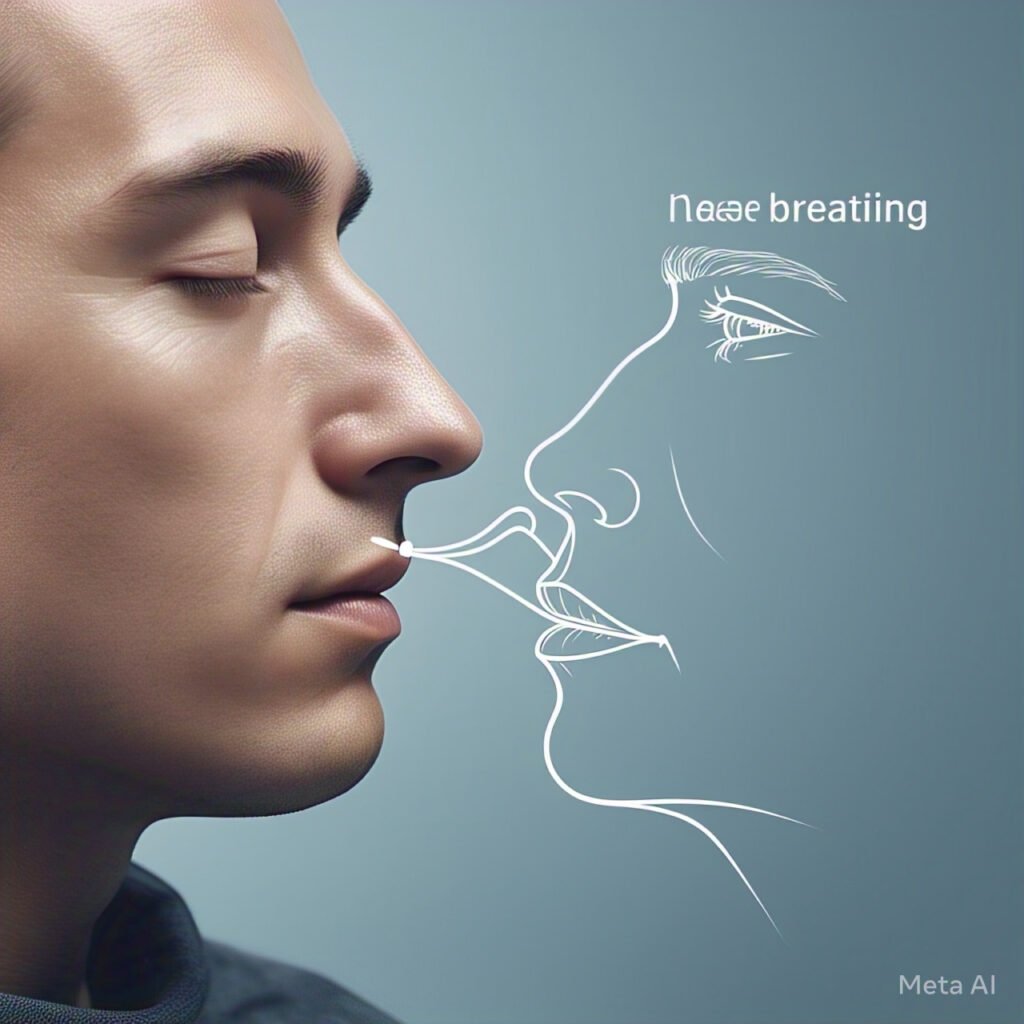Breathing techniques play a pivotal role in enhancing overall health and well-being.
While the act of breathing is often taken for granted, understanding and optimizing this natural process can lead to significant health benefits.
Proper breathing methods can greatly influence various aspects of life, including relaxation, physical performance, and mental clarity.
As individuals become increasingly aware of the vital connection between breath and body, the focus on breathing techniques has gained momentum.
Nose breathing, for instance, is a technique that encourages inhaling and exhaling through the nostrils, which has been shown to filter, humidify, and warm the air before it enters the lungs.
This method not only promotes better oxygen exchange but also facilitates a more calming physiological response.
In contrast, belly breathing, or diaphragmatic breathing, emphasizes the full engagement of the diaphragm, allowing for deeper, more efficient breaths.
This technique can help reduce stress and anxiety, making it particularly
beneficial in moments requiring relaxation and mental focus.
Other breathing methods also exist, including box breathing and alternate nostril breathing, each offering unique advantages for physical and mental well-being.
These techniques are utilized in various contexts, such as during physical exercise to enhance endurance,
in meditation practices to foster deeper states of awareness, and even in therapeutic settings to support emotional balance.
By harnessing the power of different breathing techniques, individuals can cultivate not only improved physical health but also enhanced emotional resilience and mental clarity.

Videos are added as random thoughts 💭.
Understanding Nose Breathing
Nose breathing is an essential physiological process that distinctly differs from mouth breathing in various key aspects.
Primarily, it involves inhaling and exhaling air through the nostrils, which provides numerous advantages for overall health and well-being.
One of the primary benefits of nose breathing lies in the natural filtration system that the nasal passages offer.
The nostrils are lined with tiny hairs and mucous membranes that function to filter out dust, allergens, and other airborne particles before they enter the lungs.
This filtration is crucial for maintaining optimal respiratory health.
Additionally, nose breathing plays a vital role in warming and humidifying the air we breathe.
Unlike mouth breathing, which can introduce unconditioned and cold air directly into the lungs, nasal breathing ensures that the air is brought to an appropriate temperature and moisture level.
This process reduces the risk of respiratory tract infections and supports lung function by minimizing irritation in the airways.
Furthermore, nose breathing enhances oxygen intake, which is critical for various bodily functions.
The act of breathing through the nose leads to slower, deeper breaths, promoting better gas exchange in the alveoli of the lungs.
This improved oxygen absorption not only increases energy levels but also enhances physical performance and mental clarity.
Nose breathing also contributes to immune health.
The production of nitric oxide in the nasal passages aids in vasodilation and has antimicrobial properties,
which can help the body resist infections.
Finally, this breathing technique is associated with increased calmness and a reduction in stress levels,
Thanks to its ability to engage the parasympathetic nervous system.
This connection supports relaxation and can improve overall emotional health.
The Benefits of Belly Breathing
Belly breathing, often referred to as diaphragmatic breathing, is a fundamental technique that emphasizes the engagement of the diaphragm,
allowing for deeper and more efficient breaths.
Unlike shallow chest breathing, belly breathing encourages the diaphragm to descend,
which increases the lung capacity and promotes a greater intake of oxygen.
This method not only enhances respiratory efficiency but also plays a crucial role in activating the body’s parasympathetic nervous system, which is responsible for inducing a state of calm and relaxation.
One of the key benefits of belly breathing is its profound impact on stress reduction.
When the parasympathetic nervous system is activated, the body enters a phase of rest and recovery, counteracting the effects of stress and promoting relaxation.
This shift can lead to lower levels of cortisol, the stress hormone, resulting in a more balanced emotional state.
Individuals who practice belly breathing regularly often report feeling more centered and resilient in the face of life’s challenges.
Moreover, belly breathing can also improve digestion.
By stimulating the diaphragm, this technique aids in the optimal functioning of the digestive organs.
The rhythmic movement of the diaphragm aids in massaging the digestive tract,
which may enhance gastrointestinal motility and alleviate discomfort associated with issues such as bloating or constipation.
Consequently, incorporating this breathing technique into daily routines can positively influence digestive health.
Lastly, emotional regulation is significantly enhanced through the practice of belly breathing.
As individuals learn to control their breath, they develop greater awareness of their emotional states, which can lead to improved coping mechanisms when faced with anxiety or panic.
By consistently practicing belly breathing, individuals cultivate a sense of mindfulness that facilitates emotional stability and resilience.
Thus, embracing belly breathing is an effective way to promote overall well-being and maintain a balanced life.
Comparing Nose Breathing and Mouth Breathing
Nose breathing and mouth breathing are two distinct respiratory behaviors that have significant implications for overall health and well-being.
Primarily, the nose serves as a filter and humidifier for the air we inhale, while simultaneously regulating airflow and enhancing oxygen absorption.
In contrast, mouth breathing bypasses these beneficial functions, leading to potential health drawbacks.
One major concern with mouth breathing is its negative impact on dental health.
The act of breathing through the mouth can cause a dry oral environment, reducing saliva production and increasing the risk of cavities and gum disease.
Saliva plays a crucial role in maintaining oral hygiene, acting as a natural cleanser that helps neutralize acids and wash away food particles.
Consequently, individuals who habitually breathe through their mouths may experience increased dental problems,
which can lead to more severe health complications.
Furthermore, mouth breathing is often linked to sleep apnea, a serious condition characterized by intermittent pauses in breathing during sleep.
This behavior can result in disrupted sleep patterns, leading to excessive daytime fatigue and a range of cognitive impairments.
Research has shown that individuals with sleep apnea, particularly those who breathe through their mouths, tend to have lower oxygen levels during sleep.
This decreased oxygen absorption can affect overall health, making it imperative to address the issue effectively.
In emphasizing the superiority of nose breathing,
it is also important to note that nasal passages contain mucous membranes and fine hairs,
which work together to trap dust, allergens, and pathogens.
This significantly reduces the load of harmful particles entering the lungs.
Additionally, nose breathing encourages better engagement of the diaphragm, promoting deeper and more efficient breathing.
Ultimately, adopting nose breathing can foster improved health outcomes,
making it a favorable choice for individuals seeking to enhance their respiratory function and overall well-being.
Exploring Other Breathing Techniques
In addition to nose and belly breathing, several other breathing techniques can complement these practices.
Each technique offers unique benefits and can be suitable for various situations in life.
Understanding these methods is essential for improving overall well-being.
One popular technique is box breathing, also known as square breathing.
This method involves inhaling for a count of four, holding the breath for four counts,
exhaling for four counts, and pausing for another four counts before beginning again.
Box breathing is highly effective for reducing anxiety and enhancing focus.
It is often utilized by individuals in high-stress environments, such as military personnel and athletes, to help maintain optimal performance.
Alternate nostril breathing, or Nadi Shodhana, is another valuable technique grounded in yoga practices.
This method emphasizes inhalation and exhalation through one nostril at a time, which is believed to balance the body’s energy channels.
By using the thumb to close one nostril and the ring finger to close the other while breathing, practitioners can create a sense of calm and clarity.
This technique is particularly beneficial for reducing stress and promoting mental balance.
The 4-7-8 technique is another noteworthy approach, developed by Dr. Andrew Weil to enhance relaxation and improve sleep quality.
In this method, individuals inhale for four seconds, hold the breath for seven seconds, and then exhale for eight seconds.
By promoting a slower breathing rhythm, this technique actively engages the parasympathetic nervous system,
leading to lowered heart rates and an increased feeling of tranquility.
It is especially useful for those struggling with insomnia or heightened anxiety.
Each of these breathing techniques offers distinct advantages and can complement the practices of nose and belly breathing.
By exploring and integrating various methods, individuals can enhance their overall respiratory health and mental well-being.
The Science Behind Breathing Techniques
Breathing is often regarded as a simple, involuntary function;
however, scientific research has revealed its profound influence on both mental and physical health.
Numerous studies showcase the effects of specific breathing techniques,
particularly nose breathing and belly breathing, on various physiological parameters.
One notable study published in the Journal of Physiology
Highlighted the significant impact of controlled breathing on heart rate variability (HRV).
Increased HRV is associated with enhanced autonomic nervous system function,
indicating better stress management and improved resilience.
Moreover, research has demonstrated that these breathing methods can effectively lower stress levels.
For example, a study conducted by Harvard University found that participants who engaged in deep belly breathing exhibited reduced cortisol levels, the hormone linked to stress.
This reduction correlates with a subsequent enhancement in mental clarity and emotional well-being, indicating that the simple act of modifying one’s breath can lead to tangible psychological benefits.
Furthermore, traditional practices such as yoga and meditation often incorporate specific breathing techniques, which have been validated by modern science.
A meta-analysis published in Frontiers in Psychology concluded that engaging in deliberate breathing not only improves mood but also enhances cognitive function.
These findings suggest that incorporating nose and belly breathing into daily routines can yield significant health benefits,
ranging from improved focus to heightened emotional regulation.
In light of these findings, it is evident that the act of breathing is more than a physiological necessity.
Engaging in targeted breathing techniques can lead to a range of health benefits.
As we continue to explore the intersection of science and holistic practices,
The incorporation of breathing techniques into daily life emerges as a compelling strategy for enhancing overall well-being.
Incorporating Breathing Techniques into Daily Life
Integrating nose breathing and belly breathing exercises into daily routines can yield significant health benefits, enhancing physical and mental well-being.
The key is to recognize various environments and situations where these techniques can be effectively applied.
By incorporating these breathing practices into specific activities, individuals can develop a consistent routine that fits seamlessly into their lives.
One suitable environment for practicing these techniques is during meditation.
Engaging in nose breathing while meditating can deepen the relaxation response, fostering a greater sense of calm and awareness.
When sitting comfortably, focus on inhaling slowly through the nose, allowing the breath to expand the belly before exhaling gently.
This practice helps to ground individuals and promotes mindfulness, making it easier to cultivate a tranquil state of mind.
Another ideal situation to apply belly breathing is during workouts.
Many forms of physical activity can lead to shallow breathing, diminishing endurance and overall performance.
By consciously practicing belly breathing while exercising, individuals promote optimal oxygen flow and reduce fatigue.
This technique can be particularly effective in activities like yoga or Pilates, where breath control is integral to the practice.
Moreover, moments of stress and anxiety create an urgent need for grounding techniques,
making them perfect opportunities for nose breathing.
Taking a few minutes to breathe deeply through the nose can instantly activate the parasympathetic nervous system, inducing a sense of calm.
It is beneficial to utilize these techniques during high-pressure situations, such as before a presentation or meeting, to establish composure and clarity.
To build a consistent practice, setting reminders throughout the day can be effective.
Simple prompts such as post-it notes or smartphone alerts can encourage individuals to pause and engage in a few cycles of belly breathing.
By cultivating an awareness of breath in everyday life, the benefits of these techniques become a natural part of routine, enhancing overall health and wellness.
Common Misconceptions About Breathing Techniques
Breathing techniques have gained significant attention in recent years, yet several misconceptions persist regarding their effectiveness and application.
One prevalent myth is that all breathing methods provide equal benefits.
While various techniques, such as nose breathing and
- belly breathing,
- are indeed valuable,
their benefits can differ markedly depending on individual needs and circumstances.
For example, nose breathing is often recommended for its ability to filter and humidify incoming air, enhancing oxygen uptake.
In contrast, belly breathing, which involves diaphragmatic movement, can promote deeper relaxation and stress relief.
Understanding these distinctions is vital for individuals seeking to incorporate specific breathing techniques into their routines.
Another common misunderstanding is that breathing should occur naturally without conscious effort.
While this is true to some extent, integrating mindfulness and focus into breathing practices can significantly enhance their effectiveness.
Many people may not realize that improper or shallow breathing is often a default response to stress or anxiety, which can lead to various health issues.
By consciously practicing techniques like nose breathing and belly breathing, individuals can counteract these tendencies and promote healthier patterns.
A further misconception is the belief that breathing techniques are only necessary for specific situations, such as during meditation or yoga.
In reality, conscious breathing can be beneficial in everyday life, helping individuals regulate their emotions, improve concentration, and enhance overall well-being.
Acknowledging the necessity of making breathing a focal point can lead to profound positive changes.
Whether through calming belly breaths in a stressful moment or deliberate nose breaths to enhance focus,
cultivating awareness around breath can transform how one navigates both daily and challenging circumstances.
Conclusion: The Path to Better Breathing
In this blog post, we have explored the various advantages of nose breathing and belly breathing and their significant impact on overall health and well-being.
Adopting these breathing techniques can foster a sense of calm, improve lung function, and enhance oxygen delivery throughout the body.
Nose breathing, in particular, not only filters and humidifies the air we inhale but also helps in activating the parasympathetic nervous system,
which is essential for relaxation and stress management.
Belly breathing, or diaphragmatic breathing, further complements nose breathing by encouraging deeper, more efficient breaths.
This technique promotes a greater exchange of oxygen and carbon dioxide, ultimately leading to improved energy levels and reduced feelings of anxiety.
Furthermore, these practices can enhance athletic performance and support recovery by improving cardiovascular function.
Individuals are encouraged to incorporate these techniques into their daily routines, whether through dedicated practice, meditation, or during physical activities.
The simplicity of mindful breathing makes it accessible to everyone, regardless of fitness level or experience.
Just a few minutes of focused breathing each day can lead to remarkable improvements in mental clarity, emotional regulation, and physical performance.
As you embark on this journey toward better breathing, consider keeping a journal to track your progress and reflect on the benefits you experience.
Engaging in communities or groups that emphasize the importance of nose and belly breathing can also offer additional support and encouragement.
By taking control of your breathing practices, you are not only enhancing your well-being but also paving the way for a healthier lifestyle overall.




